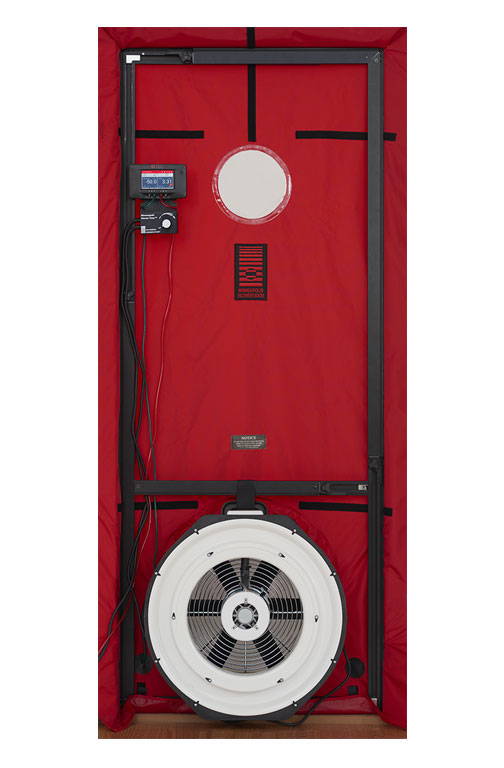Blower Door Test
What is air leakage?
Air leakage is the uncontrolled flow of air through gaps and cracks through the walls, joints and roof of a building.Why should we test buildings for air leakage using Blower Door Test?
Gaps and cracks in the building fabric (walls, joints and roof) are often impossible to detect simply by visual inspection. Air leakage paths through the building fabric can be tortuous; gaps are often hidden by internal building finishes or external cladding. Assessment of the building air leakage involves creating a measurable standard of air pressure in the structure and then determining the rate of airflow loss; much like testing a tyre puncture by dipping the inflated tyre in water and watching for bubbles.What is the importance of Air leakage testing (Blower door test)
Tests have shown that hidden infiltration of outside air in the climatic conditions of the GCC and MENA regions can lead to numerous and unwanted interior conditions that over time can be expensive to remediate and may have harmful impact on the health of the occupants.A 'leaky' building due to poor design detailing or improper construction execution will allow the costly waste of energy for air conditioning; a 'leaky' building will allow the moisture in warm desert air to condense and create breeding grounds for mould growth.
How is an air leakage test conducted?
For testing a residence or commercial building this pressurization is normally achieved by using variable air flow portable fans installed in a doorway or other suitable external opening. Tracing the often indirect paths of air leakage is generally assisted by the use of non-toxic vapor generators and infrared thermal Imaging.How long does the testing take? How much does it cost?
A typical air tightness test will involve two pressure tests performed within 4 hours. The cost depends on the size of the buildingWhat are the standards for performing air tightness testing?
Tests are conducted as per the ATTMA (the Air tightness Testing & Measurement Association) and UKAS ( the UK Accreditation Service) specifications as referenced in the Estidama Pearl Rating System and the Dubai Green Building Regulations. The information gained from an air tightness test can contribute to compliance requirements and earning credit points for the Estidama and LEED rating systems.Professional energy auditors use blower door tests to help determine a home's air-tightness.
These are some reasons for establishing the proper building tightness:
• Reducing energy consumption due to air leakage • Avoiding moisture condensation problems • Avoiding uncomfortable drafts caused by cold air leaking in from the outdoors • Making sure that the home's air quality is not too contaminated by indoor air pollution.A blower door is a powerful fan that mounts into the frame of an exterior door. The fan pulls air out of the house, lowering the air pressure inside. The higher outside air pressure then flows in through all unsealed cracks and openings. The auditors may use a smoke pencil to detect air leaks. These tests determine the air infiltration rate of a building.
Blower doors consist of a frame and flexible panel that fit in a doorway, a variable-speed fan, a pressure gauge to measure the pressure differences inside and outside the home, and an airflow manometer and hoses for measuring airflow.

